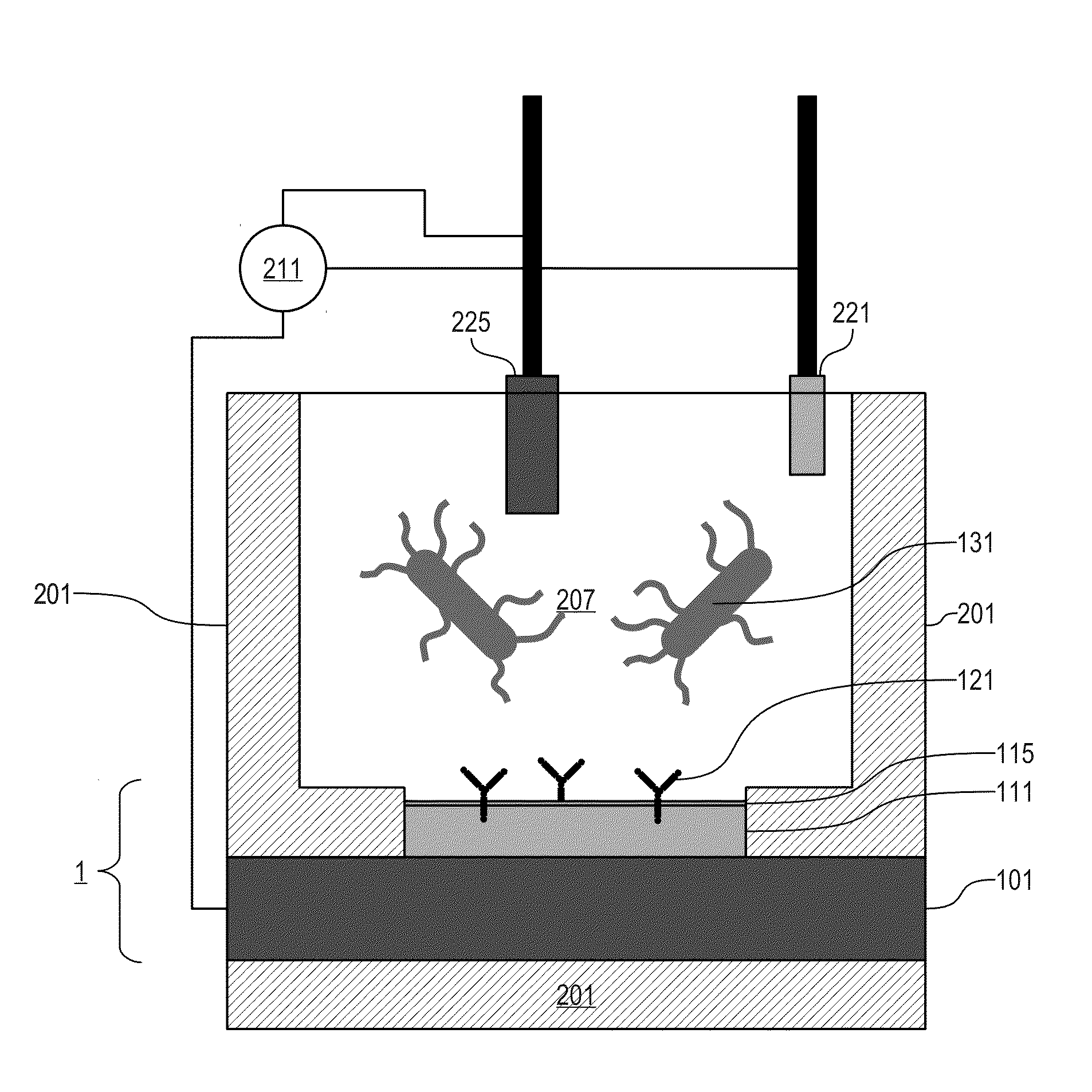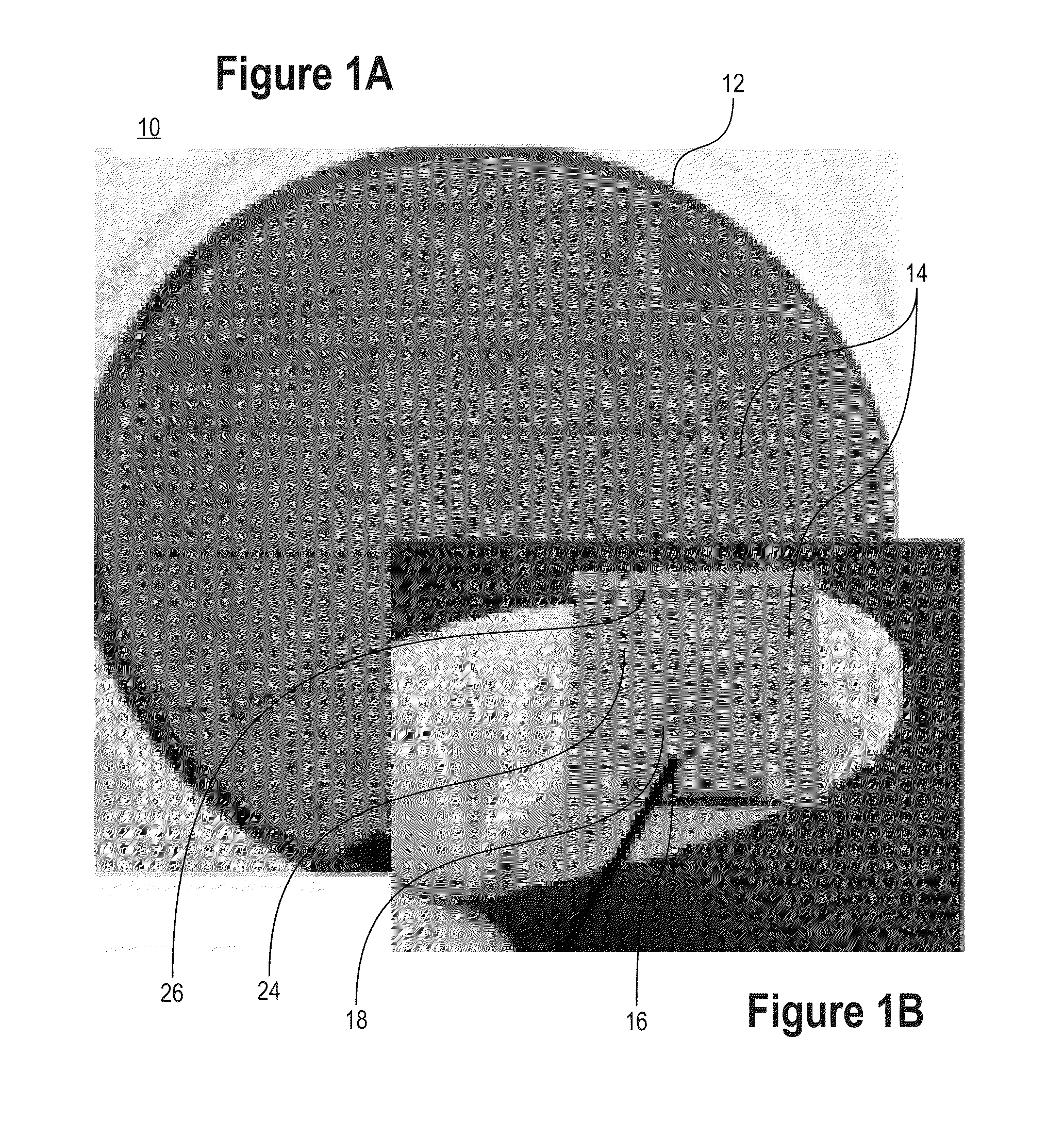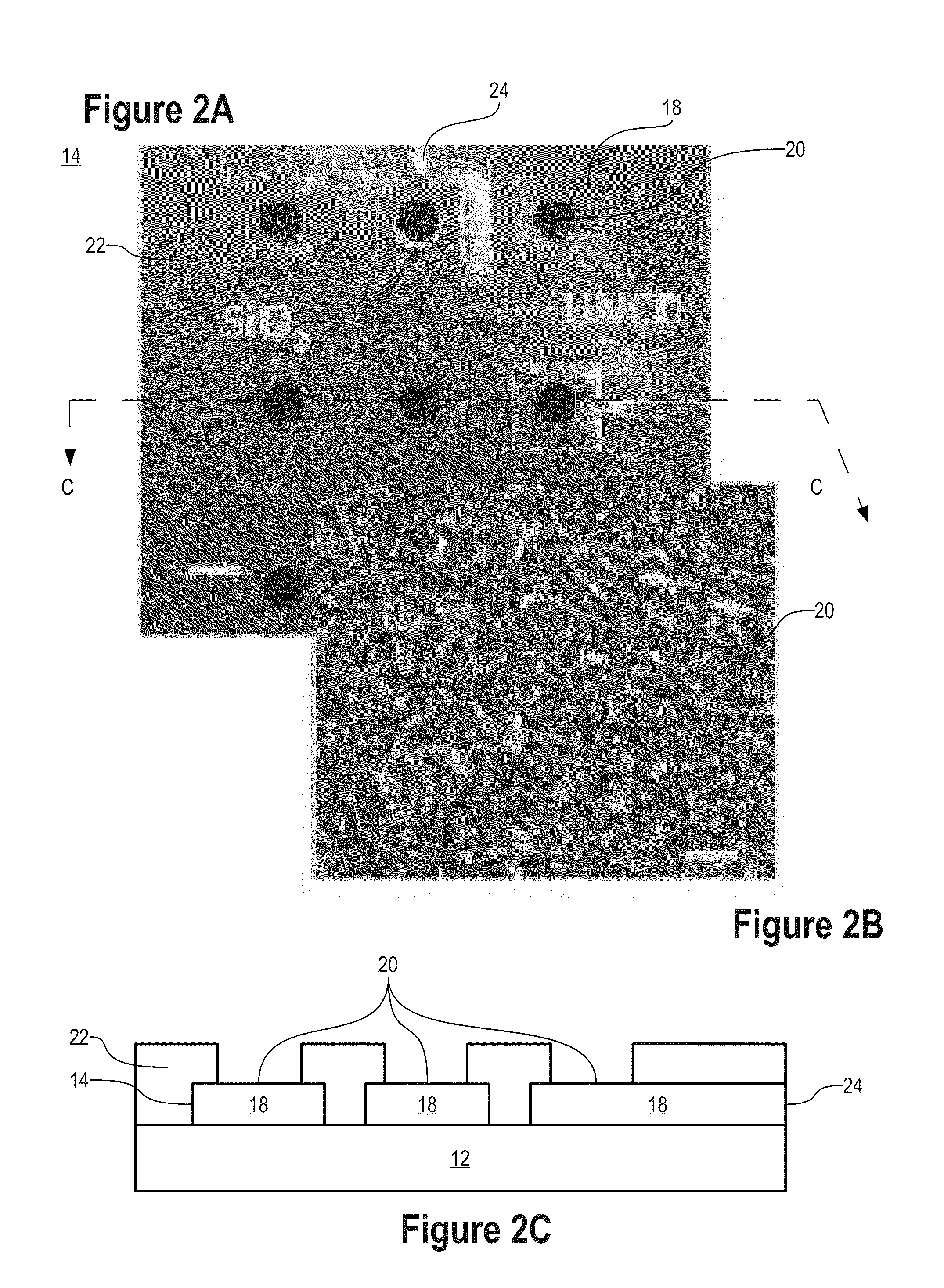Electroanalytical sensor based on nanocrystalline diamond electrodes and microelectrode arrays
- Summary
- Abstract
- Description
- Claims
- Application Information
AI Technical Summary
Benefits of technology
Problems solved by technology
Method used
Image
Examples
Embodiment Construction
[0046]FIG. 1A shows an optical image of a substrate comprising a 4 inch wafer 10 comprising a silicon substrate 12 having fabricated thereon a plurality of chips or die 14, each comprising a 3×3 UNCD microelectrode array (MEA) 16, according to an embodiment of the present invention. In this example, as shown enlarged in FIG. 1B, each microelectrode 18 has an active area 200-μm in diameter and conductive traces 24 are provided to individually connect each microelectrode to a respective contact pad 26. FIG. 2A shows a SEM image of part of one of the chips 14 showing an enlarged view of the nine individually addressable microelectrodes 18 of the MEA 16, with the overlying passivation layer 22 having apertures over each electrode. A SEM image showing the ultrasmooth UNCD surface morphology is shown in FIG. 2B.
[0047]As shown in FIG. 2C, which shows a cross-section C-C through the MEA 16 shown in FIG. 2A, the MEA is fabricated on a silicon substrate 12 on which is formed a dielectric laye...
PUM
| Property | Measurement | Unit |
|---|---|---|
| Thickness | aaaaa | aaaaa |
| Diameter | aaaaa | aaaaa |
| Diameter | aaaaa | aaaaa |
Abstract
Description
Claims
Application Information
 Login to View More
Login to View More - R&D
- Intellectual Property
- Life Sciences
- Materials
- Tech Scout
- Unparalleled Data Quality
- Higher Quality Content
- 60% Fewer Hallucinations
Browse by: Latest US Patents, China's latest patents, Technical Efficacy Thesaurus, Application Domain, Technology Topic, Popular Technical Reports.
© 2025 PatSnap. All rights reserved.Legal|Privacy policy|Modern Slavery Act Transparency Statement|Sitemap|About US| Contact US: help@patsnap.com



